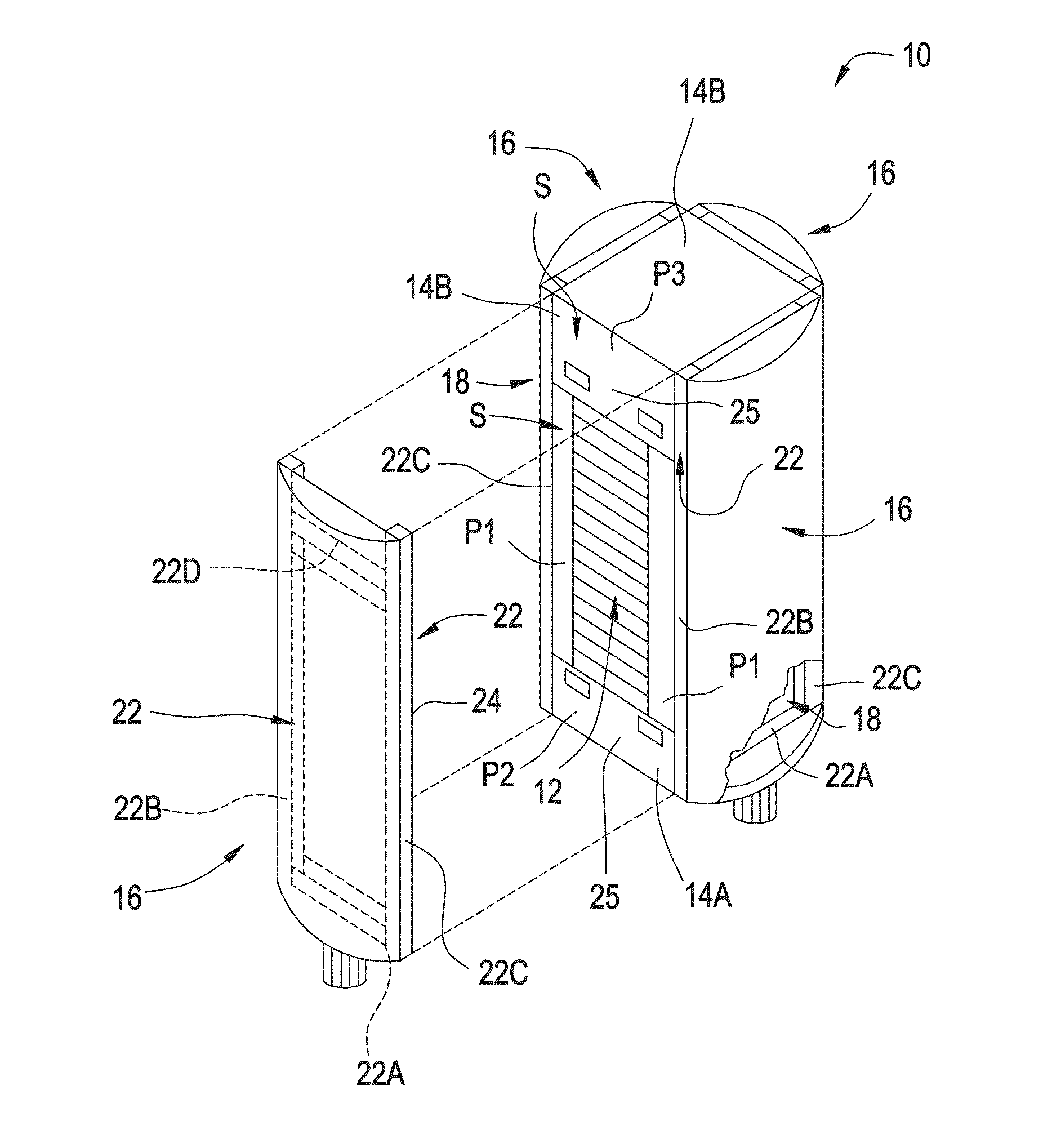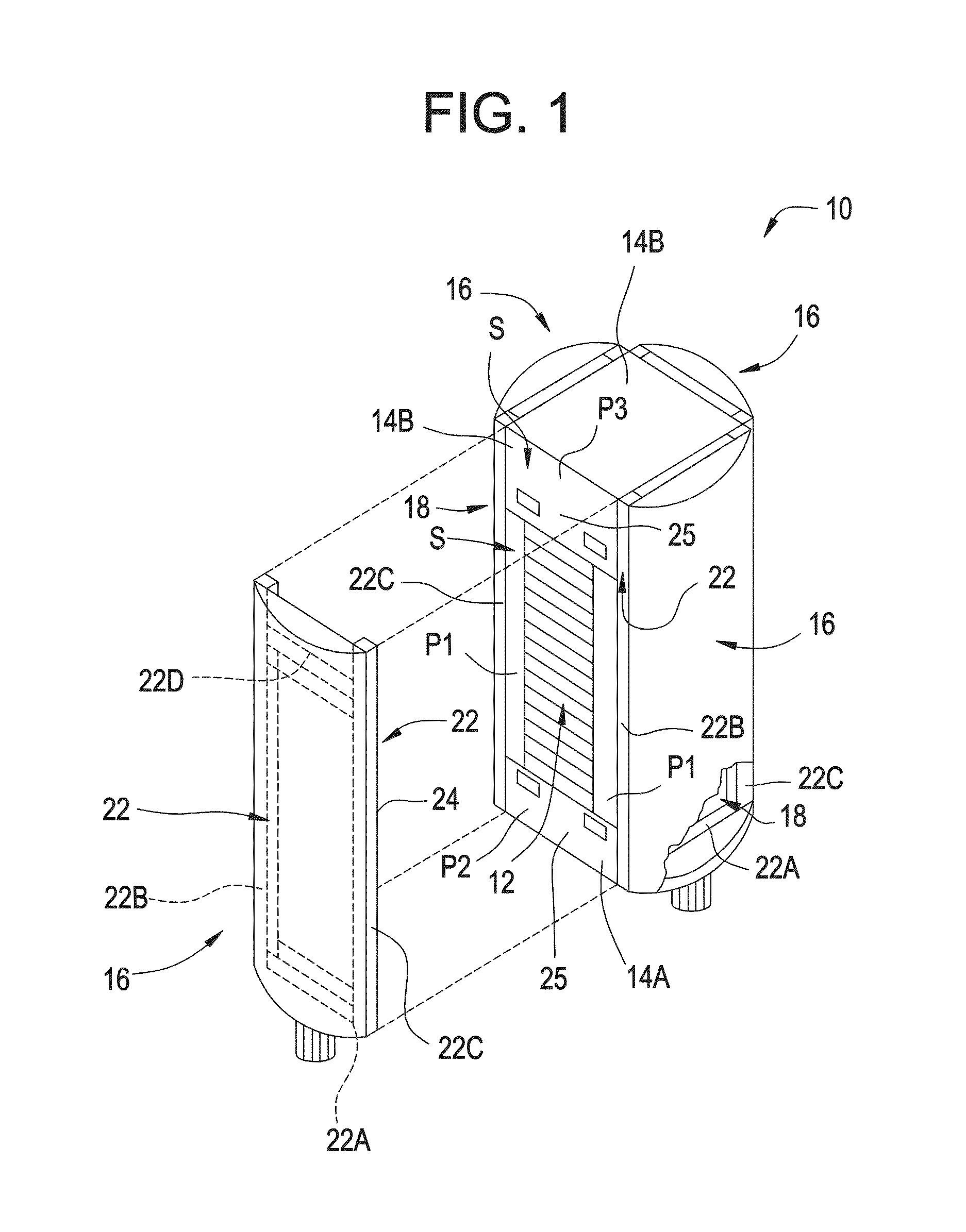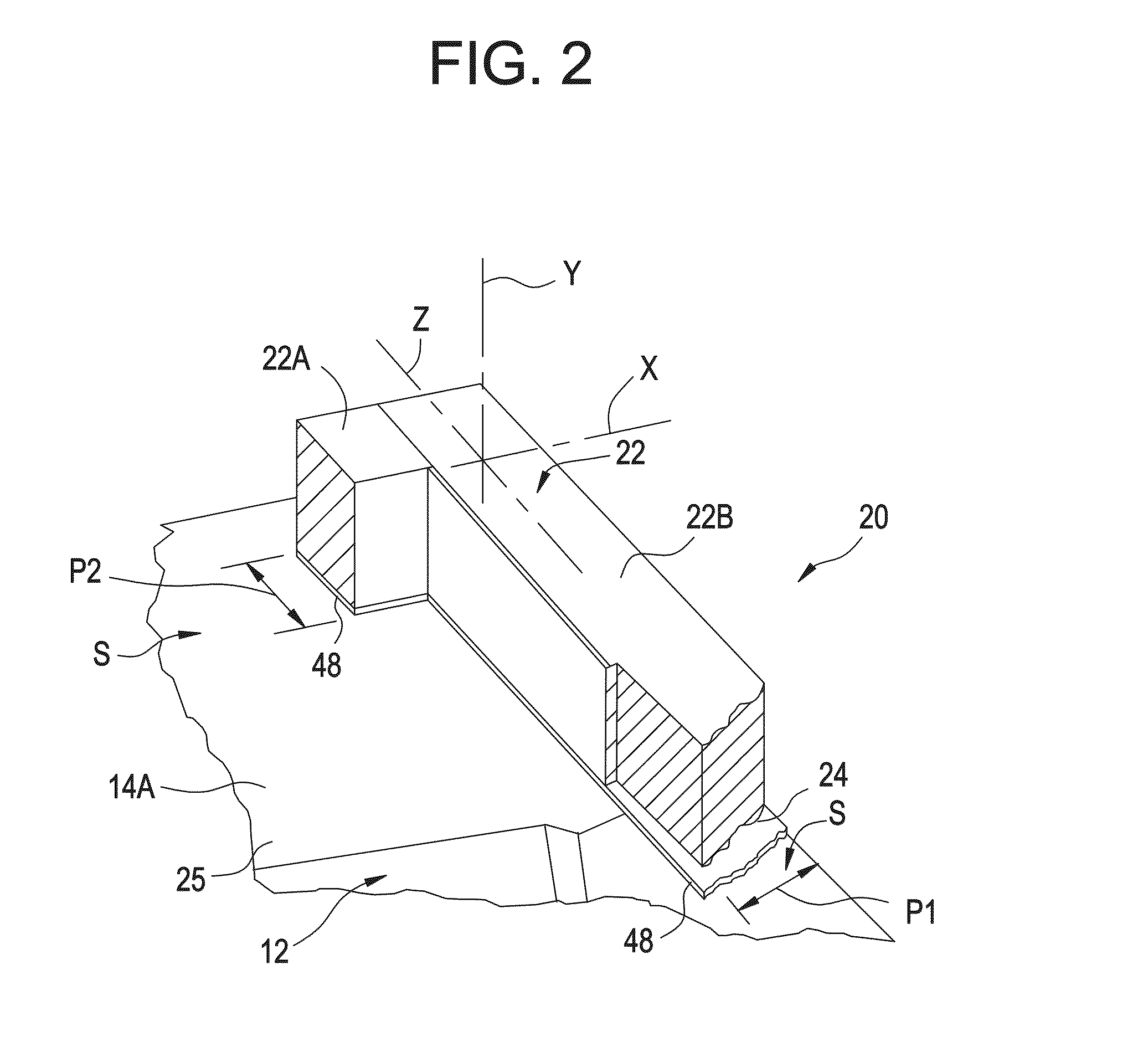Gasket for fuel cell system manifold seal
- Summary
- Abstract
- Description
- Claims
- Application Information
AI Technical Summary
Benefits of technology
Problems solved by technology
Method used
Image
Examples
Embodiment Construction
[0032]Referring to FIG. 1 a fuel cell system, generally designated by the numeral 10 includes a Molten Carbonate Fuel Cell (MCFC) stack 12 positioned between opposing end plates 14A and 14B. A manifold 16 is shown positioned on three of four outwardly facing surfaces 18 of the fuel cell system 10 for directing a fluid such as fuel or an oxidant into or out of the fuel cell stack. One of the manifolds 16 is shown removed from the outwardly facing surface 18 to illustrate the stack 12 and outward facing surface 18. When assembled all four manifolds 16 are positioned on one of the respective outwardly facing surfaces 18. A generally rectangular sealing area S extends around a peripheral portion of each of the outwardly facing surfaces 18. The sealing area S is defined by a peripheral area P1 of the fuel cell stack and portions P2 and P3 of the endplates 14A and 14B, respectively. Each of the manifolds 16 has a portion thereof secured to a portion of the portion P2 of the end plate 14A....
PUM
 Login to View More
Login to View More Abstract
Description
Claims
Application Information
 Login to View More
Login to View More - R&D
- Intellectual Property
- Life Sciences
- Materials
- Tech Scout
- Unparalleled Data Quality
- Higher Quality Content
- 60% Fewer Hallucinations
Browse by: Latest US Patents, China's latest patents, Technical Efficacy Thesaurus, Application Domain, Technology Topic, Popular Technical Reports.
© 2025 PatSnap. All rights reserved.Legal|Privacy policy|Modern Slavery Act Transparency Statement|Sitemap|About US| Contact US: help@patsnap.com



